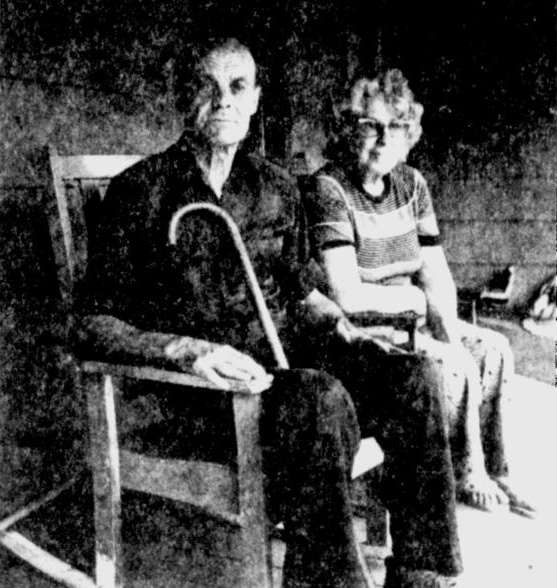Death Rates Rise for Young White Americans Too
It's not just midlife whites - mortality rates for whites ages 25 to 34 are also increasing

Last fall, when I read the alarming study by the Princeton researchers Anne Case and Angus Deaton that found that the mortality rate for midlife white non-Hispanic whites is rising, my thoughts turned immediately to McDowell County, West Virginia. Why? Because my family hails from that county, which has the distinction being the jurisdiction with the lowest male life expectancy in the United States. Female life expectancy is only the second lowest in the country, at 73 years; the lowest is found in nearby Perry County, Kentucky, where women can expect lives lasting on average just 72.7 years. Men in McDowell County live an average of 63.9 years, compared to a national average of 76.3. In Fairfax County, Virginia, the average American male's lifespan is 81.7 years—nearly 18 years more than McDowell's men.
During the post–World War II coal boom, the population of McDowell County swelled to nearly 100,000 by 1950. (My father's family decamped from coal country to dairy farming in Virginia at about the same time.) The county's population, which is about 90 percent white, has since dropped to just over 20,000 today. Fewer than 6 percent of residents have a college degrees, and the annual per capita income is $14,000. By comparison, some 30 percent of Americans over age 25 have bachelor's degrees or above, and per capita annual income stands at $28,000.
One more pertinent fact: McDowell County is where the first food stamps were distributed in 1961. On the occasion the U.S. Department of Agriculture reported: "Mr. and Mrs. Alderson Muncy of Paynesville, West Virginia, were the first food stamp recipients on May 29, 1961. They purchased $95 in food stamps for their 15-person household. In the first food stamp transaction, they bought a can of pork and beans at Henderson's Supermarket."
U.S. mortality rates have been steadily declining and life expectancies increasing for well more than a century. So the discovery that white midlife mortality rates in the U.S. have been rising since the beginning of the 21st century is startling. (Rising mortality rates do translate into lower life expectancy, but not in a linear way.)
Case and Deaton found that the death rates for middle-aged white Americans, ages 45 to 54, has been rising since 1999. (Deaton is the 2015 Nobel Economics Laureate.) The rise in white midlife death rates is found entirely among those Americans with a high school degree or less. The 2013 mortality rates for midlife whites with high school degree or less is 736 per 100,000; for those with some college education it is 288 per 100,000; for whites with a B.A. or higher their death rate stands at 178 per 100,000. In other words, whites who have only a high school degree or less are four times more likely to die between ages 45 and 54 than are college-educated whites. For comparison, the overall death rate for midlife black non-Hispanics is 582 per 100,000; for Hispanics, it is 270 per 100,000.
Even more disturbing, the phenomenon of rising white mortality rates is not confined to midlife. According to Robert Anderson, chief of the Mortality Statistics Branch at the Centers for Disease Control's National Center for Health Statistics, the mortality rate for the cohort of non-Hispanic white Americans between the ages of 25 and 34 has risen from 90 per 100,000 in 2000 to 115 per 100,000 in 2014. This is a reversal of the trend for that group, which saw its mortality rate fall from 118 per 100,000 in 1980 to 90 per 100,000 in 2000. The mortality rate for the in-between cohort spanning the ages of 35 to 44 dropped from 197 per 100,000 in 1980 to 181 per 100,000 in 2000 and has been essentially flat since then.

The CDC has not disaggregated the mortality trends in these younger white cohorts by educational attainment yet, so it is not known if they will mirror those uncovered by Case and Deaton. "I know better than to speculate in advance of the data," says Case. She and her colleagues plan to do an analysis of the mortality data from the younger cohorts and publish their findings.
As it happens, McDowell County is also the jurisdiction in the U.S. with the highest overall mortality rate, except for two counties in South Dakota that lie entirely within Indian reservations (which is in itself a sad and appalling situation). McDowell County's mortality rate is 861 per 100,000 persons. The lowest mortality rate in the country is found in Pitkin County, Colorado, where it stands at 118 per 100,000. Nearly 57 percent of Pitkin County residents have bachelor's degrees or above, and per capita income there is just shy of $52,000 per year. The county seat of Pitkin is Aspen.
Case and Deaton report that nearly two-thirds of the increase in the white midlife death rate is the result of drug overdosing. Most of the rest is attributed to increases in suicide and in chronic liver diseases like alcoholic cirrhosis. The death rates in 2013 for midlife whites with a high school education or less, from drug poisoning, suicide, and cirrhosis, is 58, 39, and 39 per 100,000, respectively. The comparable rates for college-educated whites are 8, 16, and 7 per 100,000, respectively.
What is going on?
CDC data show that mortality rates have consistently been higher the further one gets from central metropolitan areas, and that the gap between urban and rural white mortality rates has been widening since 2000. As Case and Deaton found, mortality is increasing chiefly among white midlife Americans without college degrees. Seventy-eight percent of the 465 counties in which 20 percent or more of the working-age population (adults ages 25 to 64) lacks a high school diploma or equivalent are located in non-metro areas. The unemployment rate for people without a high school degree is three times higher than for those with a college degree. In addition, the U.S. Department of Agriculture reports that the "share of working-age adults with at least a 4-year college degree was 14 percentage points higher in urban areas than in rural areas (32 percent versus 18 percent)."
"Something profound is going on," says Case. Noting that her study with Deaton also reported rising reports of ill health, both mental and physical, she adds, "We need to focus on what is causing people so much distress."
Oregon State University economist Bruce Weber has pointed out that "persistent poverty is largely a rural phenomenon." In fact, 95 percent of the nearly 400 counties that have experienced persistent poverty over the past half century—those that have sustained poverty rates higher than 20 percent—are rural. Some researchers suggest that government policies, such as distributing employment vouchers to firms or providing one-time lump-sum grants to the local self-employed, new businesses, or small proprietors, might be able to forestall decline and help to revive fading rural communities.
Others counter that if the resources that once sustained a place are no longer valuable, we shouldn't try to keep people and businesses there. In such instances, economists David Kraybill of Ohio State University and Maureen Kilkenny of Iowa State University observe, "The provision of subsidies to induce people to stay in that place delays the inevitable. At worst, such subsidies effectively retain the kinds of people who are the least able to adjust, ultimately, to market forces." They add, "It does no good to retain (or attract) people in places that are too costly for most businesses, which cannot sustain economic activity. That turns the place into a poverty trap."
The history of food stamps in McDowell County may provide one clue as to why the death rates for poor rural whites is rising. Perhaps dependence on the paltry alms doled out by the welfare state encourages rural recipients to stay out in the boondocks where they have few opportunities for improving their lives. Not being as cautious about speculation as Case, I'll guess that lots of poor rural whites have come to believe that the modern world is leaving them behind and are seeking solace in mind-numbing substances and suicide. Bribing people to stay poor can kill them.
Show Comments (44)